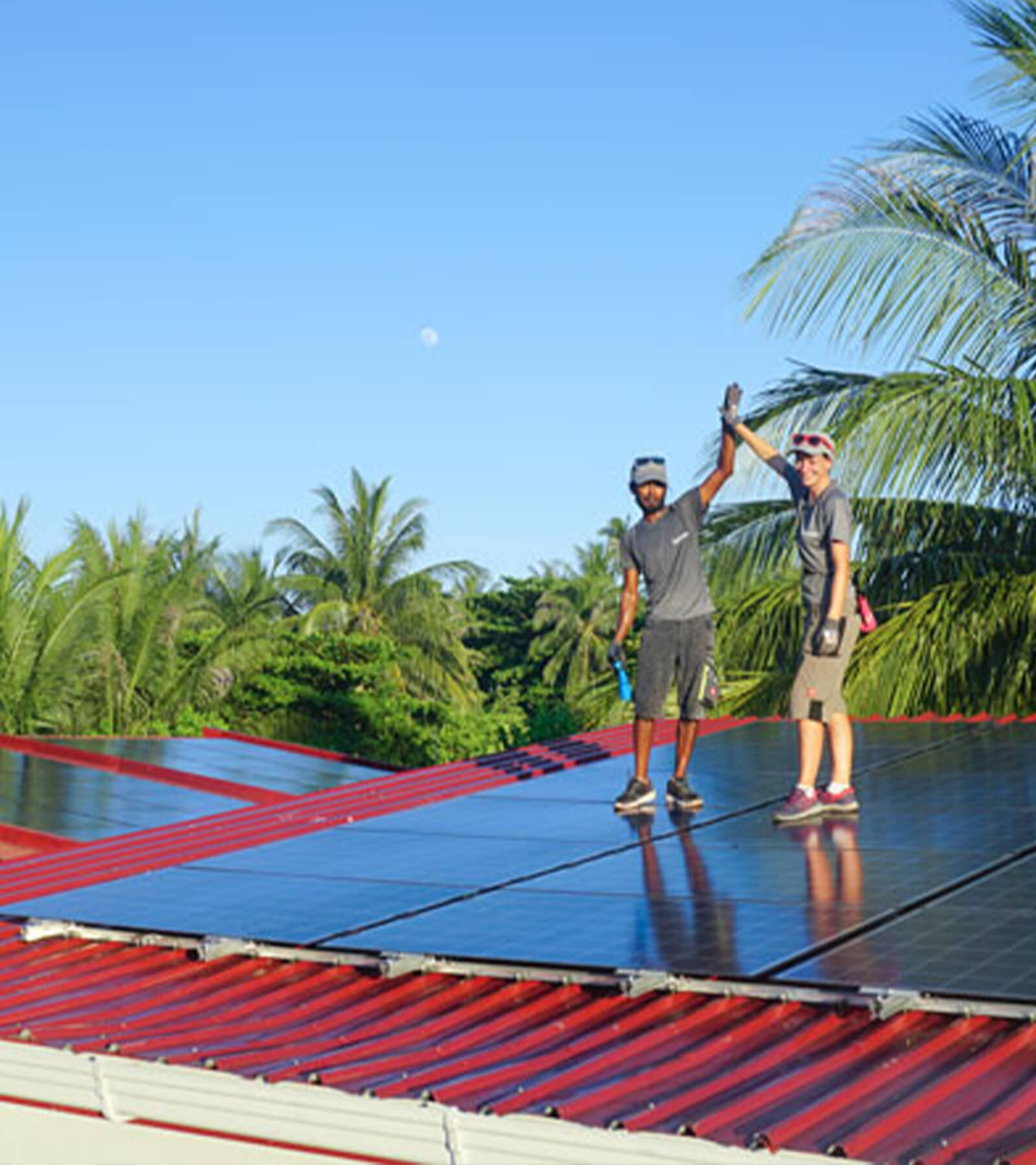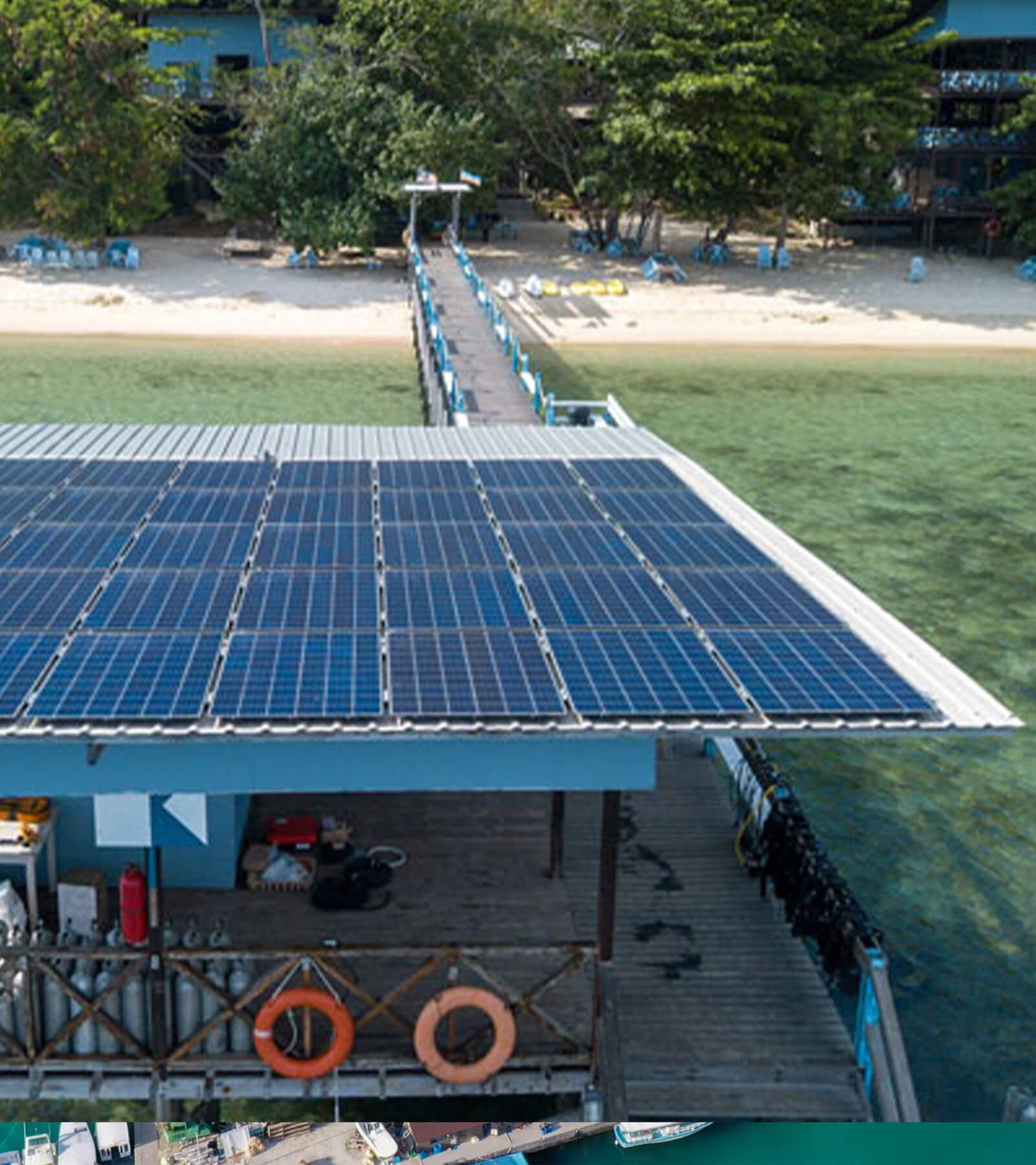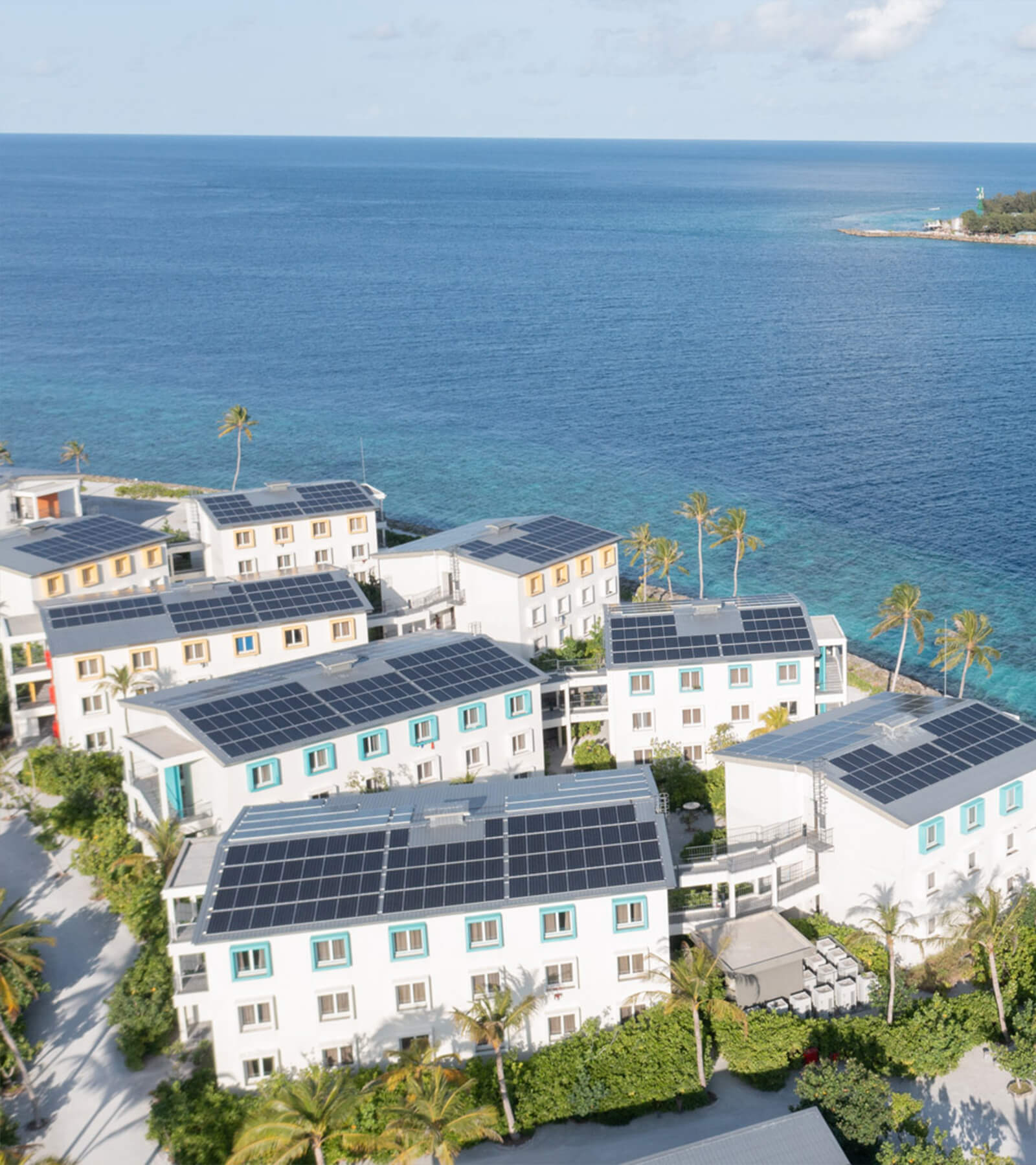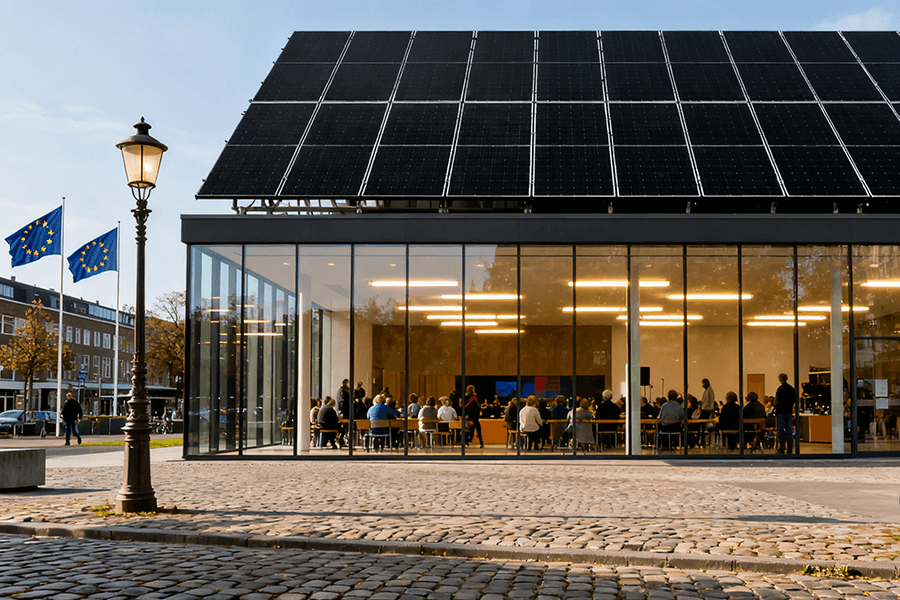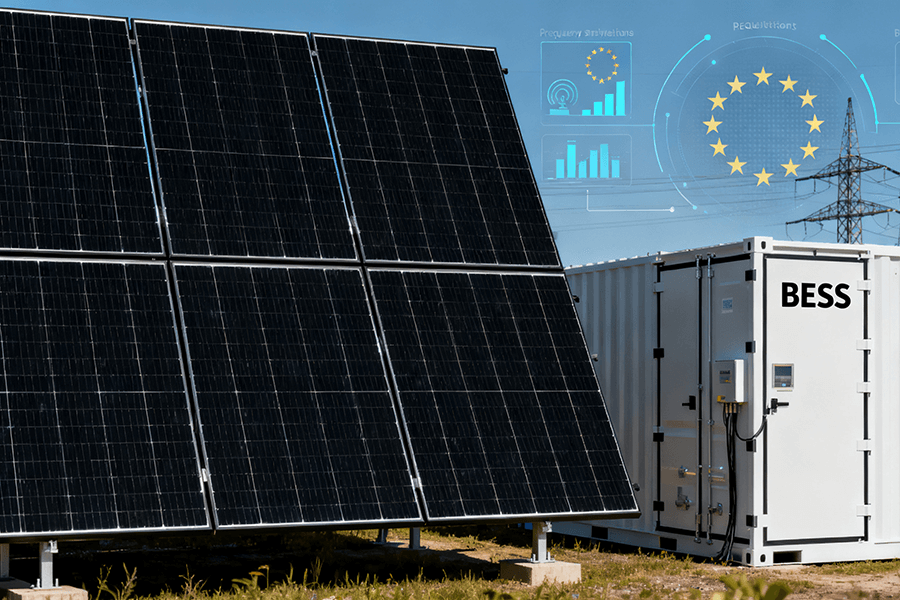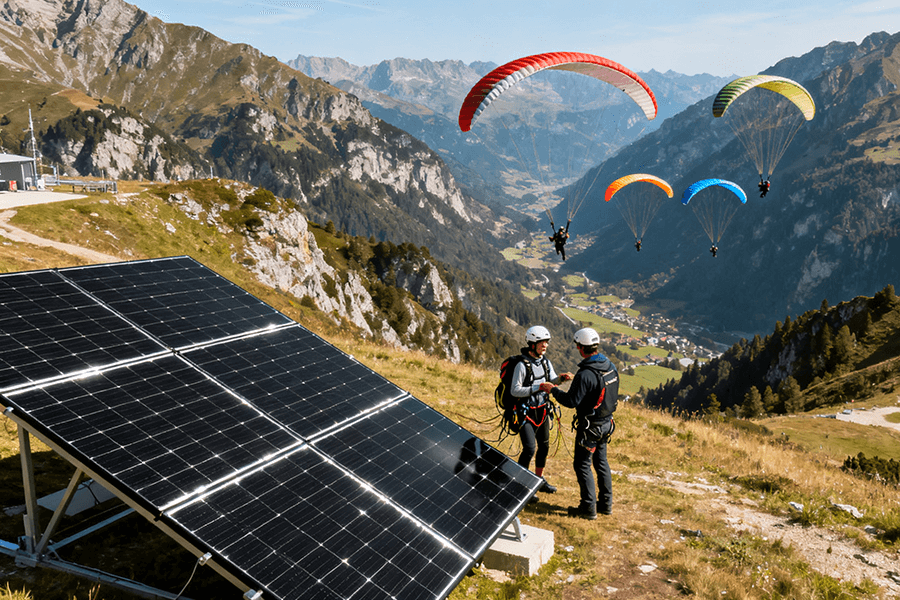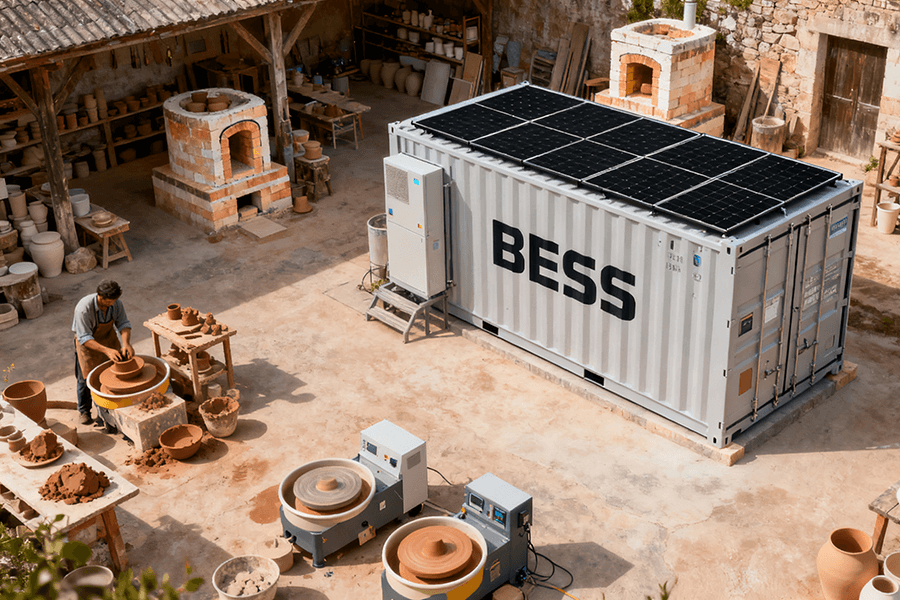
Introduction
In the fast-evolving global energy landscape, major European energy expos have emerged as indispensable cornerstones of the energy storage industry. These events transcend the traditional definition of “trade shows”; they serve as vibrant arenas where groundbreaking innovations are unveiled, strategic partnerships are solidified, and the blueprint for a sustainable energy future is meticulously crafted.
Two premier expos stand out as industry trailblazers:
- Intersolar Europe (Munich, Germany): A venerable institution with over three decades of history in the solar and energy storage sectors, the 2024 edition of Intersolar Europe was a testament to its enduring significance. The event attracted an impressive lineup of 1,400+ exhibitors, showcasing the latest advancements in solar technology, energy storage solutions, and smart grid systems. With 45,000 attendees hailing from 150 countries, it was the largest gathering of solar and energy storage professionals in Europe. Key highlights included live demonstrations of cutting-edge solar panels with record-breaking efficiency, interactive workshops on grid integration of renewable energy sources, and networking sessions that facilitated cross-border collaborations.
- EES Europe (Düsseldorf, Germany): As Europe’s leading trade fair dedicated exclusively to energy storage, EES Europe provides an in-depth exploration of the latest trends and technologies in the Battery Energy Storage System (BESS) domain. The 2024 edition of the event was a hotspot for industry stakeholders, with 80% of attendees actively seeking BESS solutions for grid-scale and industrial applications. The exhibition floor was abuzz with innovative BESS container designs, advanced battery chemistries, and intelligent energy management systems. Panel discussions featuring industry experts delved into topics such as the role of BESS in enabling a 100% renewable energy future, regulatory frameworks for energy storage deployment, and the economic viability of BESS projects.
At the epicenter of these expos lies the BESS container—a modular and scalable energy storage solution that addresses critical challenges such as grid instability and the intermittency of renewable energy sources. These containers house high-capacity batteries, power conversion systems, and sophisticated control units, enabling efficient storage and dispatch of electricity. Their significance in the energy transition cannot be overstated, as evidenced by a report from BloombergNEF (https://www.bnef.com/), which projects that European BESS deployments will surge from 12 GW in 2023 to a staggering 75 GW by 2030. The energy expos play a pivotal role in this growth trajectory, serving as platforms for companies to showcase their latest BESS container technologies, exchange knowledge, and explore new business opportunities.
Highlighted BESS Container Products & Technologies at Expos
New Product Launches from Key Brands
The 2024 European Energy Expos served as a launchpad for industry giants to unveil breakthrough Battery Energy Storage System (BESS) containers, each setting new benchmarks for the sector. These innovative products not only showcase cutting-edge technology but also redefine the possibilities of energy storage solutions.
| Brand | Model Name | Energy Density | Continuous Power | Key Innovation | Target Use Case |
|---|---|---|---|---|---|
| Desay Battery | DS-BESS 1000 | 200 Wh/kg | 1 MW | Modular module design (scalable 1–5 MWh), enabling seamless expansion without rewiring or structural changes. | Commercial microgrids, grid support, ideal for businesses looking for flexible energy storage solutions. |
| Wintech Digital Energy | WT-ESS 2000 | 185 Wh/kg | 1.5 MW | Lithium Iron Phosphate (LFP) battery technology offering over 10,000 charge-discharge cycles, ensuring long-term reliability. | Industrial peak shaving, renewable energy integration, designed to meet the demanding needs of industrial operations. |
| Sungrow | PowerTitan 2.0 | 210 Wh/kg | 2 MW | Integrated fire suppression system, providing enhanced safety features for large-scale energy storage projects. | Utility-scale storage projects, suitable for power grids requiring high-capacity and secure energy storage. |
Standout Details:
- Desay’s Modular Edge: The DS-BESS 1000’s modular design is a game-changer in the industry. It empowers customers to start small with a 1 MWh capacity and gradually scale up by adding 500 kWh modules as their energy needs grow. This flexibility eliminates the need for complex rewiring or structural modifications, saving both time and costs. At the expo, Desay demonstrated the system’s efficiency by assembling a 3 MWh setup in just 4 hours—half the time compared to traditional systems. This showcases the potential for rapid deployment and easy expansion, making it an attractive option for businesses with evolving energy requirements.
- Wintech’s Longevity: The WT-ESS 2000 stands out for its exceptional lifespan, thanks to its advanced LFP battery technology. With over 10,000 charge-discharge cycles, it can operate for more than 15 years, significantly outlasting standard BESS systems, which typically have a lifespan of 8–10 years. This extended lifespan translates to substantial cost savings over the system’s lifetime. As noted by a utility executive at the expo, “This cuts replacement costs by 40% over the system’s lifetime.” This makes the WT-ESS 2000 a cost-effective and reliable choice for industrial applications, where long-term performance and durability are crucial.
Demoed Technologies That Wowed Audiences
Efficient Thermal Management
Overheating poses a significant threat to the performance and lifespan of BESS systems. Recognizing this challenge, the 2024 expos spotlighted advanced liquid-cooling systems designed to effectively manage temperature and prevent thermal runaway.
- How it works: These systems utilize a closed-loop coolant circuit that wraps around the battery cells. As the coolant circulates, it absorbs heat generated during operation and transfers it to external radiators for dissipation. This continuous cooling process ensures that the battery cells maintain an optimal operating temperature, even under high load conditions.
- Expo Demo Result: Sungrow’s PowerTitan 2.0 demonstrated the effectiveness of liquid-cooling technology in a real-world scenario. During the expo, the system was put through rigorous testing, operating at its full 2 MW power capacity in a hall with a temperature of 42°C. Despite these challenging conditions, the PowerTitan 2.0 maintained cell temperatures at a stable 28°C (±2°C). In contrast, air-cooled systems tested under the same conditions reached temperatures exceeding 40°C. This significant difference highlights the superior cooling performance of liquid-cooling systems and their ability to safeguard battery health and longevity.
- Audience Reaction: The importance of thermal management was evident in the audience’s response. A post-expo survey revealed that 90% of attendees cited thermal management as their top concern when considering BESS systems. Furthermore, 75% indicated that they would prioritize liquid-cooled models for their next energy storage projects, underscoring the growing demand for reliable thermal management solutions in the industry.
AI-Powered Intelligent EMS
Energy Management Systems (EMS) received a major upgrade at the 2024 expos, with the integration of artificial intelligence (AI) to enhance their functionality and performance. These AI-powered EMS solutions leverage advanced algorithms to analyze historical data, predict energy demand, and optimize the operation of BESS systems.
- Sungrow’s EMS Demo: Sungrow showcased the capabilities of its AI-powered EMS through a live simulation. The system analyzed 12 months of grid data to identify patterns and predict peak demand periods. Based on this analysis, it automatically discharged stored energy during the afternoon peak hours (3–7 PM) when electricity prices are typically highest and grid demand is at its peak. Conversely, it charged the BESS during off-peak hours (10 PM–6 AM) when electricity is cheaper and less in demand. The results were impressive: the simulation demonstrated an 18% reduction in grid stress and saved €12,000 per month in operational costs for the utility. This highlights the potential of AI-powered EMS to optimize energy usage, reduce costs, and enhance the efficiency of power grids.
- Industry Feedback: The response from industry professionals was overwhelmingly positive. A UK utility representative commented, “This isn’t just ‘smart’—it’s actionable. We could integrate this into our grid next quarter.” This enthusiasm reflects the industry’s recognition of the value and practicality of AI-powered EMS solutions. As energy grids become more complex and the demand for renewable energy increases, these intelligent systems are poised to play a crucial role in ensuring the stability, reliability, and sustainability of future energy systems.
Industry Exchange & Cooperation at Expos
Seminars: Debating BESS’s Next Chapter
The 2024 European Energy Expos served as a vibrant hub for intellectual discourse, hosting over 50 Battery Energy Storage System (BESS)-focused seminars. Three hot topics emerged as the focal points of intense discussions, driving forward the conversation on BESS advancements:
Technology: Solid-State Batteries for BESS
Industry titans Tesla and Northvolt took center stage, uniting in their conviction that solid-state batteries (SSBs) are poised to revolutionize the BESS landscape by 2028. Their insights shed light on the transformative potential and current challenges of this technology:
Advantages:
- Exceptional Energy Density: SSBs boast an energy density exceeding 300 Wh/kg, a remarkable 50% increase compared to the widely-used Lithium Iron Phosphate (LFP) batteries. This translates to more stored energy in a compact space, enhancing the efficiency of BESS installations.
- Longevity: With a lifespan of over 15,000 charge-discharge cycles, SSBs significantly outlast traditional batteries, reducing the need for frequent replacements and lowering long-term operational costs.
Hurdle:
- Cost Barrier: Currently, SSBs come with a hefty price tag of €150/kWh, starkly contrasting with the €80/kWh cost of LFP batteries. However, Northvolt’s Chief Technology Officer (CTO) offered a glimmer of hope, predicting that through economies of scale, the cost of SSBs could plummet to €100/kWh by 2030.
Policy: EU’s New BESS Incentives
The EU’s 2024 “Green Deal Industrial Plan” emerged as a pivotal topic of discussion, generating widespread excitement and anticipation within the BESS community. This comprehensive initiative, backed by a substantial €2.5 billion fund for energy storage, introduced a series of incentives designed to accelerate the deployment of BESS projects across Europe:
- Tax Credits: BESS projects with a capacity of under 100 MW are eligible for a generous 30% tax credit, providing a significant financial boost to developers and investors.
- Streamlined Permitting Process: Grid-connected BESS projects now enjoy a fast-track permitting process, reducing the approval timeline from over 12 months to a mere 6 months. This streamlined approach aims to eliminate regulatory bottlenecks and expedite project implementation.
- Growth Projections: A German energy minister emphasized the transformative impact of these incentives, forecasting that they will drive the addition of 10 GW of BESS capacity in Europe by 2026 alone.
Signed Cooperation Agreements
The European Energy Expos are not just platforms for discussion; they are also hotbeds of collaboration and deal-making. In 2024, several high-impact partnerships in the BESS domain were forged, signaling a new era of innovation and growth:
- Desay Battery + Enel (Italy): In a strategic move to address the unique challenges posed by Southern Europe’s high temperatures, Desay Battery and Enel joined forces for a joint research and development project. Their goal is to develop a cutting-edge 5 MWh BESS container optimized for the region’s climate. The project is targeted for launch in 2025, promising to enhance the reliability and efficiency of energy storage solutions in Southern Europe.
- Wintech + E.ON (Germany): Wintech and E.ON entered into a significant supply agreement, under which Wintech will provide 200 units of its WT-ESS 2000 system for E.ON’s industrial peak-shaving projects. With a total value of €120 million, this partnership will enable E.ON to effectively manage electricity demand during peak hours, reducing costs and enhancing grid stability.
- Sungrow + National Grid (UK): Recognizing the importance of ensuring a stable energy supply during periods of low wind and solar generation, Sungrow and the National Grid of the UK partnered to deploy 10 units of the PowerTitan 2.0 system. These advanced energy storage systems will play a crucial role in balancing the grid and integrating renewable energy sources, contributing to the UK’s transition to a low-carbon future.
Future Trends for European BESS Containers
Market Trends: Where Demand Is Heading
BloombergNEF’s 2024 expo report outlined three pivotal market shifts that are reshaping the European Battery Energy Storage System (BESS) landscape:
Growth Projection: The European BESS market is on an extraordinary growth trajectory, with analysts forecasting a market value of €28 billion by 2030. This represents a significant leap from the €4.2 billion recorded in 2024, translating to an impressive Compound Annual Growth Rate (CAGR) of 40%. Such exponential growth signals not only a burgeoning industry but also a critical shift towards sustainable energy solutions.
New Use Cases:
- EV Charging Hubs: As the adoption of electric vehicles surges, BESS is emerging as a linchpin for ensuring grid stability. BESS stores excess energy during off-peak hours and supplies it to charging stations during peak demand, effectively preventing grid overloads and ensuring seamless charging experiences for EV users.
- Virtual Power Plants (VPPs): The concept of VPPs is gaining traction, where 100+ small BESS units are aggregated to function as a single, large-scale power source. This innovative approach enhances grid flexibility, improves energy efficiency, and allows for better integration of intermittent renewable energy sources.
Geographic Hotspots: Certain regions are leading the charge in the European BESS market:
| Country | Market Share | Driving Factor |
|---|---|---|
| Germany | 35% of EU demand | High renewable energy penetration |
| Spain | 20% of EU demand | Favorable regulatory environment and abundant solar resources |
| UK | 18% of EU demand | Ambitious decarbonization targets and strong grid infrastructure |
Technology Trends: What’s Next
The BESS industry is also witnessing rapid technological advancements, with several key trends set to define its future:
Battery Chemistry: Lithium Iron Phosphate (LFP) batteries are expected to maintain their dominance until 2028, thanks to their cost-effectiveness, long cycle life, and enhanced safety features. However, Solid-State Batteries (SSBs) are poised to disrupt the market, capturing 20% of the market share by 2030. SSBs offer higher energy density, faster charging times, and improved safety, making them a promising technology for the next generation of BESS.
Safety: With safety being a top priority, more BESS installations will incorporate advanced safety features:
- Thermal Runaway Prevention: State-of-the-art sensors will be deployed to monitor cell temperatures in real-time. If the temperature reaches 45°C, the system will automatically shut down the affected cells, preventing thermal runaway and potential fires.
- Non-Toxic Fire Suppressants: Environmentally friendly fire suppression systems will become standard, ensuring rapid and safe containment of any potential fires without the use of harmful chemicals.
Connectivity: The integration of 5G technology in BESS is set to revolutionize grid management. 5G-enabled BESS will enable real-time communication between the storage system and the grid, allowing for dynamic adjustment of charging and discharging cycles. This level of connectivity is crucial for the effective operation of VPPs, enabling seamless coordination and optimization of energy resources across the grid.
Maxbo Solar’s Role in the BESS Revolution
As part of the Maxbo Solar team (www.maxbo-solar.com), we were thrilled to unveil our revolutionary MB-BESS 1500 container at the prestigious 2024 Intersolar Europe—a pivotal event in the global renewable energy calendar. The reception we received exceeded all expectations, solidifying our product’s position as a game-changer in the energy storage landscape.
What truly sets the MB-BESS 1500 apart from the competition? Let’s dive into its key differentiators:
Dual-Mode Flexibility: Powering Diverse Energy Needs
| Feature | FeatureGrid Support Capability | Off-Grid Microgrid Capacity |
|---|---|---|
| Continuous Power | 1.2 MW | N/A |
| Energy Storage | N/A | 1.8 MWh |
This remarkable combination of grid support and off-grid capabilities makes the MB-BESS 1500 uniquely suited to a wide range of applications. Whether it’s stabilizing the electrical grid during peak demand or providing reliable power to remote communities, our containerized energy storage system delivers exceptional performance.
Cost Efficiency: Pioneering Sustainable Solutions
We are committed to sustainability and cost-effectiveness, which is why we’ve integrated recycled Lithium Iron Phosphate (LFP) cells into the MB-BESS 1500. These cells meet the stringent requirements of the EU’s Circular Economy standards, ensuring both environmental responsibility and financial savings. By leveraging recycled materials, we’ve managed to reduce production costs by 15% compared to traditional solutions—an advantage we pass on to our customers.
The Intersolar Europe expo served as a catalyst for collaboration and growth. Over the course of the event, we engaged in more than 50 productive meetings with leading utilities, project developers, and industry experts. One of the highlights was a promising preliminary agreement with a major French solar farm. Under this deal, we are set to supply 10 units of the MB-BESS 1500 in 2025, marking a significant milestone in our journey to transform Europe’s energy future.
For Maxbo Solar, participating in expos like Intersolar Europe is about more than just showcasing products; it’s about forging strategic partnerships and driving innovation. We believe that by working together, we can create a more reliable, sustainable, and resilient energy ecosystem for generations to come.
Conclusion
European energy expos are the lifeblood of the BESS container industry. They serve as the dynamic hub where:
- Technological Innovation: New technologies are rigorously tested
- Business Transactions: Deals are successfully sealed
- Trend Setting: Future directions are established
And in 2024, their significance amplified as Europe intensified its pursuit of the net – zero target.
The BESS ecosystem converges at these expos, showcasing a diverse range of advancements:
- Modular Designs: Desay’s innovative modular solutions
- Battery Longevity: Wintech’s durable battery offerings
- Policy Landscape: Incentives driving industry growth
- Scientific Breakthroughs: Significant advancements in SSB technology
For Maxbo Solar, these expos present a valuable opportunity:
- Knowledge Acquisition: To learn about the latest developments
- Network Expansion: To connect with industry peers
- Contribution: To contribute to the growth of the sector
With anticipation, we await the 2025 expos, eager to witness the new innovations and potential partnerships that will emerge. Here’s to fostering a more resilient European grid, powered by advanced energy storage solutions!

